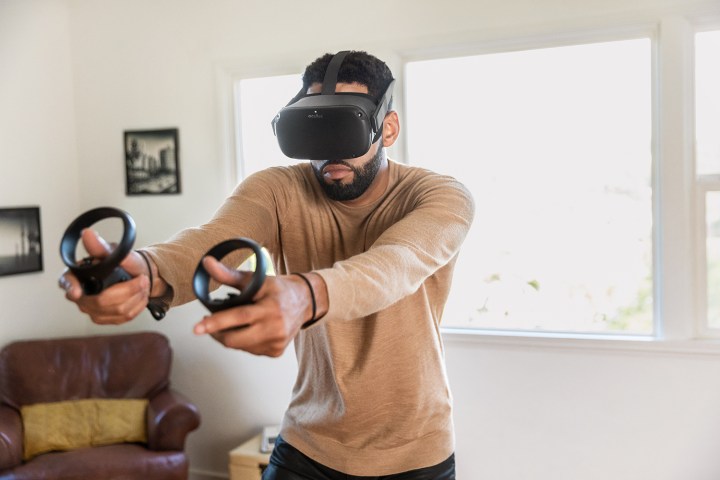Apple is working on a premium virtual reality (VR) headset of a similar size to the Oculus Quest, according to a report from Bloomberg citing “people with knowledge of the matter.” The device could launch as soon as 2022 with an expensive price tag.
Apple has long been rumored to be working on an augmented reality (AR) headset, and CEO Tim Cook has previously explained that his preference lay with augmented rather than virtual reality, as it “gives the capability for both of us to sit and be very present.” VR, on the other hand, can shut people off from each other.
Those concerns seem to have faded, though, with the company devoting resources to a VR headset and spending much time and money on overcoming design hurdles it has faced along the way. Some prototypes have been too bulky and heavy, for example, which the company is trying to combat by using fabric in the headset design.
The report suggests the headset will use some of Apple’s “most advanced and powerful” processors, some of which allegedly beat Apple’s Mac-based M1 chip. It also claims that it may feature a fan, which would be an unusual move if it will indeed use Apple’s incredibly efficient chips — the Apple M1 in the MacBook Air, for instance, is so efficient that it does not need a fan.
What seems more likely is that the headset containing a fan is a testing prototype, and that if the final product does indeed come with ARM-based Apple chips, it will forego the active cooling system. Another reason to doubt the inclusion of a fan is that the headset will be battery-powered, which might be put under strain by a fan (Apple’s processors, though, are incredibly power-efficient and probably less of a concern).
When VR meets AR

Some prototypes of the VR headset reportedly include external cameras for use in AR settings, such as tracking hand movements that could be used with applications or a virtual keyboard. Apps for the platform will be based on an operating system called rOS, which will have its own App Store.
With its top-end features like a powerful processor and high-resolution displays, the VR headset is expected to be niche and expensive, with Apple apparently not expecting to sell more than 200,000 units per year. That follows a trend of Apple introducing premium devices in new categories for the company — such as the original HomePod and AirPods Max — before introducing more affordable versions later.
In this case, the eventual goal may consist of launching an AR headset or pair of glasses in the next few years, with the VR headset serving to drive up interest in the subject among Apple users. An AR headset makes sense given Apple’s expertise in spatial audio, aptly demonstrated in its AirPods Pro headphones, and its existing AR knowledge in both software and hardware (such as the iPhone 12 Pro’s lidar scanner). Watch this space.



